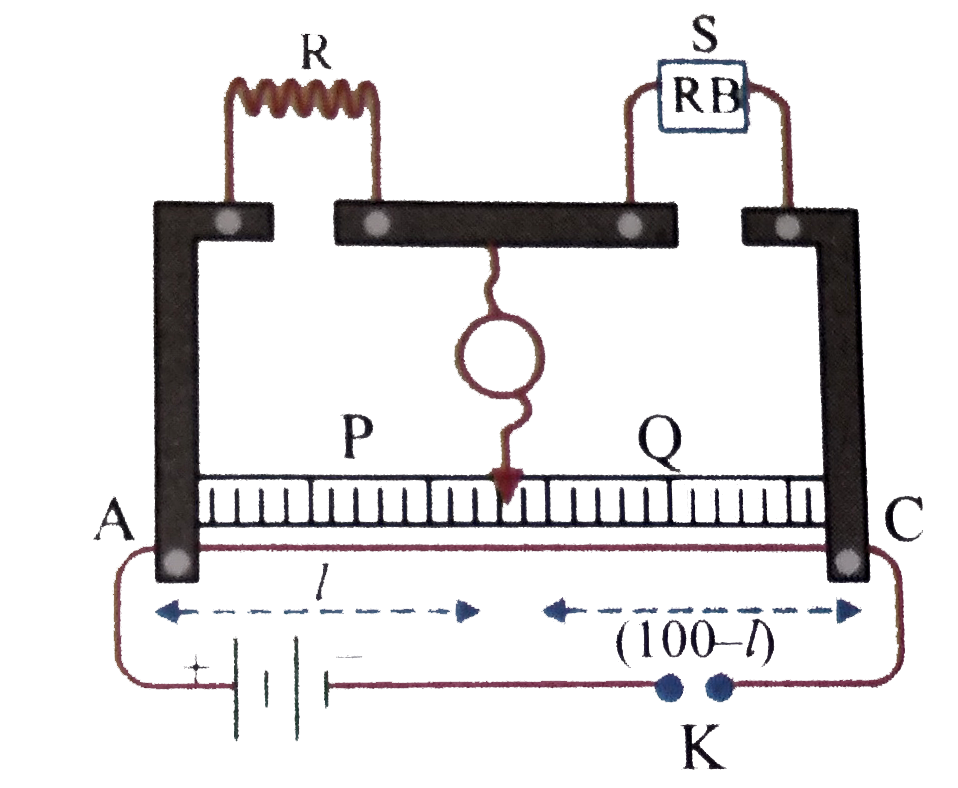The resistivity of a wire
Increases with the length of the wire
Decreases with the area of cross-section
Decreases with the length and increase with the cross-section wire
None of the above statement is correct
The correct Answer is:D
To solve the question regarding the resistivity of a wire and determine which of the given statements is correct, we can follow these steps:
1. Understand the Concept of Resistivity:
- Resistivity (ρ) is a property of the material of the wire. It is a measure of how strongly a material opposes the flow of electric current.
2. Identify the Variables:
- The resistivity of a wire is influenced by the material it is made from, not its physical dimensions (length or cross-sectional area).
3. Analyze Each Statement:
- Statement A: "The resistivity of a wire increases with the length of the wire."
- This statement is incorrect because resistivity does not depend on the length of the wire.
- Statement B: "The resistivity of a wire decreases with the area of cross-section."
- This statement is also incorrect. Resistivity is independent of the cross-sectional area.
- Statement C: "The resistivity of a wire decreases with the length and increases with the cross-section of the wire."
- This statement is incorrect as well. Resistivity does not depend on either length or cross-sectional area.
- Statement D: "None of the above statements is correct."
- This statement is correct because all the previous statements are false.
4. Conclusion:
- The correct answer is D: None of the above statements is correct.
- Resistivity (ρ) is a property of the material of the wire. It is a measure of how strongly a material opposes the flow of electric current.
- The resistivity of a wire is influenced by the material it is made from, not its physical dimensions (length or cross-sectional area).
- Statement A: "The resistivity of a wire increases with the length of the wire."
- This statement is incorrect because resistivity does not depend on the length of the wire.
- Statement B: "The resistivity of a wire decreases with the area of cross-section."
- This statement is also incorrect. Resistivity is independent of the cross-sectional area.
- Statement C: "The resistivity of a wire decreases with the length and increases with the cross-section of the wire."
- This statement is incorrect as well. Resistivity does not depend on either length or cross-sectional area.
- Statement D: "None of the above statements is correct."
- This statement is correct because all the previous statements are false.
- The correct answer is D: None of the above statements is correct.
Topper's Solved these Questions
- CURRENT ELECTRICITYBOOK - VMC MODULES ENGLISHCHAPTER - CURRENT ELECTRICITYEXERCISE - IN-CHAPTER EXERCISE-C
10 Videos
- CURRENT ELECTRICITYBOOK - VMC MODULES ENGLISHCHAPTER - CURRENT ELECTRICITYEXERCISE - IN-CHAPTER EXERCISE-D
9 Videos
- CURRENT ELECTRICITYBOOK - VMC MODULES ENGLISHCHAPTER - CURRENT ELECTRICITYEXERCISE - IN-CHAPTER EXERCISE-A
10 Videos
- CAPACITORSBOOK - VMC MODULES ENGLISHCHAPTER - CAPACITORSEXERCISE - JEE Advance ( Archive ) LEVEL 48
1 Videos
- DC CIRCUITBOOK - VMC MODULES ENGLISHCHAPTER - DC CIRCUITEXERCISE - JEE ADVANCED ARCHIVE
68 Videos
Similar Questions
If resistance S in RB=300Ω, then the balanced length is found to be 25.0cm from end A. The diameter of unknown wire is 1mm and length of the unknown wire is 3.14cm. The specific resistivity of the wire should be

View SolutionIn meter bridge experiment if, resistance S in resistance box =300Ω then the balanced length is found to be 25.0cm from end A. The diameter of unknown wire is 1mm and length of unknown wire is 31.4cm. The specific resistivity of the wire should be
View SolutionThe resistance of a wire R Ω . The wire is stretched to double its length keeping volume constant. Now, the resistance of the wire will become
View Solution"The resistance of a wire is 1 ohm". Explain the statement.
View SolutionThe resistance of a wire is R ohm. If it is melted and stretched to n times its original length, its new resistance will be
View SolutionThe resistance of a wire at 20∘C is 20Ω and at 500∘C is 60Ω. At which temperature its resistance will be 25Ω?
View SolutionThe resistance of a wire is 10Ω. Its length is increased by 10% by stretching. The new resistance will now be
View SolutionThe resistance of a wire is R ohm. What will be its new resistance if it is stretched to n times its original length ?
View SolutionIf the resistivity of a potentiometer wire be ρ and area of cross-section be A , then what will be potential gradient along the wire
View SolutionHow is the resistance of a wire affected if its (a) length is doubled, (b) radius is doubled ?
View Solution
